Portland Guitar Co. | Portland Oregon | Contact Jay Dickinson-503.245.3276 | jay@portlandguitar.com
Home | Orders & Sales | Photo Gallery | Current Builds | Finished Builds
Rosettes & Marquetry |Shop Tour | Biography | News
Engineered Braces | Tilt Action Neck | Split Saddle Bridge | Split Saddle Nut
Portland Guitar Pretty Good Intonation (PGPG) System
Short Version | Introduction | Intonation Errors | Analysis | PG Approach | Comparisons | Conclusion
PGPG Intonation
Instrument Comparisons
For comparison purposes four guitars have been tested and the results graphed and analyzed. For each guitar the results from all six strings are presented on a single graph along with the IQ Number.
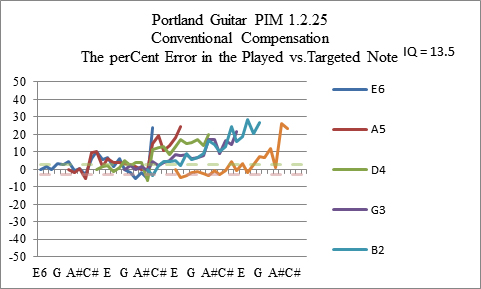
Figure 21
Fig 21 shows the results for my 25th effort as a luthier, Parlor Model PM 1.2.25. At this point in my career I was using a straight bone compensated saddle with no nut compensation. This is a typical configuration for a commercially made guitar. It appears that things go astray at the upper end of the fretboard but are OK down near the nut.

Figure 22
Figure 22 shows the results for Orchestral Model OM 1.11.42 a mid-career effort of mine. It has a compensated Split Saddle Bridge, but no nut compensation. It looks like a split saddle bridge has a positive effect compared to PM 1.2.25 in fig 4. The graphs tend to lie near the 0 line but do drift a bit as you move up the fretboard. The low E has a bit of trouble as it is played up the fretboard though.
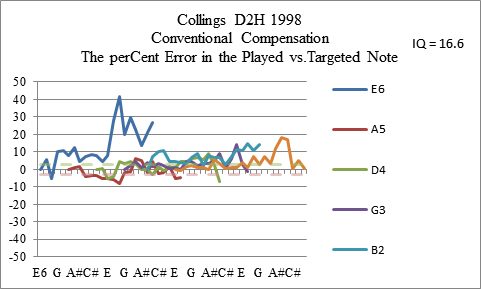
Figure 23
Figure 23 shows the results for my Collings D2H; this has been my gold standard for comparison purposes as I have learned to build guitars. This is a very nice guitar being described as among the finest production instrument available… as I was told. It has a conventional slanted saddle for compensation. The results here are comparable to the previous example in Fig 5 OM 1.11.42 except for the low E string which is a little funky. That’s alright, I still love my Collings.

Figure 24
Fig 24 shows the results for my latest effort in building a guitar (April 2018) and the first falcate braced instrument I have built, re Gore & Gilet… The Blue Cutaway Theater Model 3.1.75… even though it’s not blue (fig. 25). This guitar has a Tilt Action Neck, Dual Action Truss Rod, Split Saddle Bridge, and Spit Saddle Nut, and was optimized using the Portland Guitar Pretty Good (PGPG) Intonation Process.
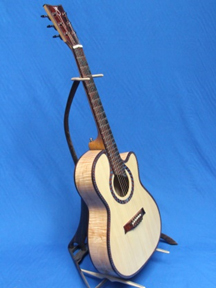
Figure 25
Retrofitting an Existing Guitar:
I built a classical guitar for a friend and recently retrofitted it with an adjustable nut. The guitar was initially built with a split saddle bridge and a straight line nut. Figure 26 shows the results before a Split Saddle Nut was installed. Figure 27 shows the results after installation of the adjustable nut.
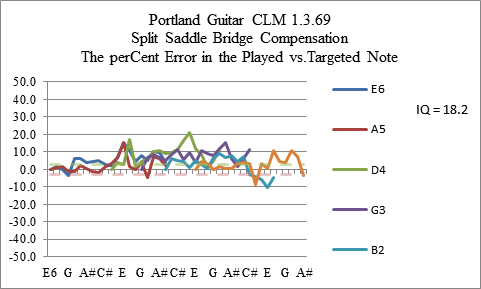
Figure 26
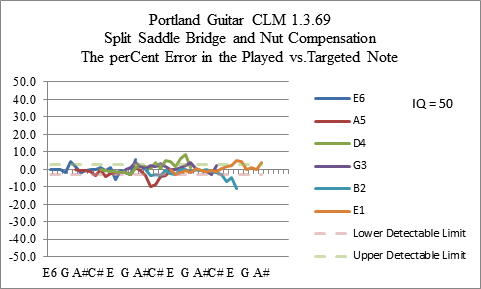
Figure 27
We can see from the graphs that there has been a dramatic improvement in the intonation quality. The plots are tighter and closer to the zero line. The IQ number has increased from 18.2 to 50, a factor of 2.7… not too bad for $5 worth of materials.